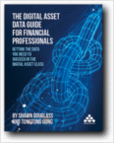 | Digital assets have grown to represent a significant market capitalization. Institutional adoption continues to grow rapidly with most either actively managing a portfolio of digital assets or planning to in the near term. Financial institutions can no longer ignore this asset class. However, while entering this complex and highly volatile asset class provides tremendous opportunity, it is also fraught with new risks and challenges. The digital asset class is no longer just about Bitcoin. There are now many blockchains, cryptocurrencies and centralized exchanges (CEX) that make up the crypto economy. Add to that the advent of non-custodial, decentralized exchanges (DEX) that leverage self-executing smart contracts to allow peer-to-peer (P2P) trading facilitated by automated market makers (AMM), and access to the emerging sector of decentralized finance (DeFi). DeFi is redefining how financial products and services are consumed and financial professionals like you are realizing the need to innovate in this environment to compete with crypto-native market entrants. As digital assets become pervasive and widely adopted, the total market size and applications are unimaginable, but could represent trillions of dollars in new businesses being created as every individual and business around the world adopts this technology. Crypto native assets are just the beginning, as precious metals, real estate, equities, and more start to trade as digital assets, disrupting traditional financial services. (Figure 2). For example, security tokens have been used to create digital assets that represent ownership in physical assets, such as gold, sports cars, and even assets like equity and debt. Additionally, decentralized exchanges and DeFi are redefining how financial primitives are structured and traded, allowing new financial products to be built and deployed with instant global reach. Request Free! |
